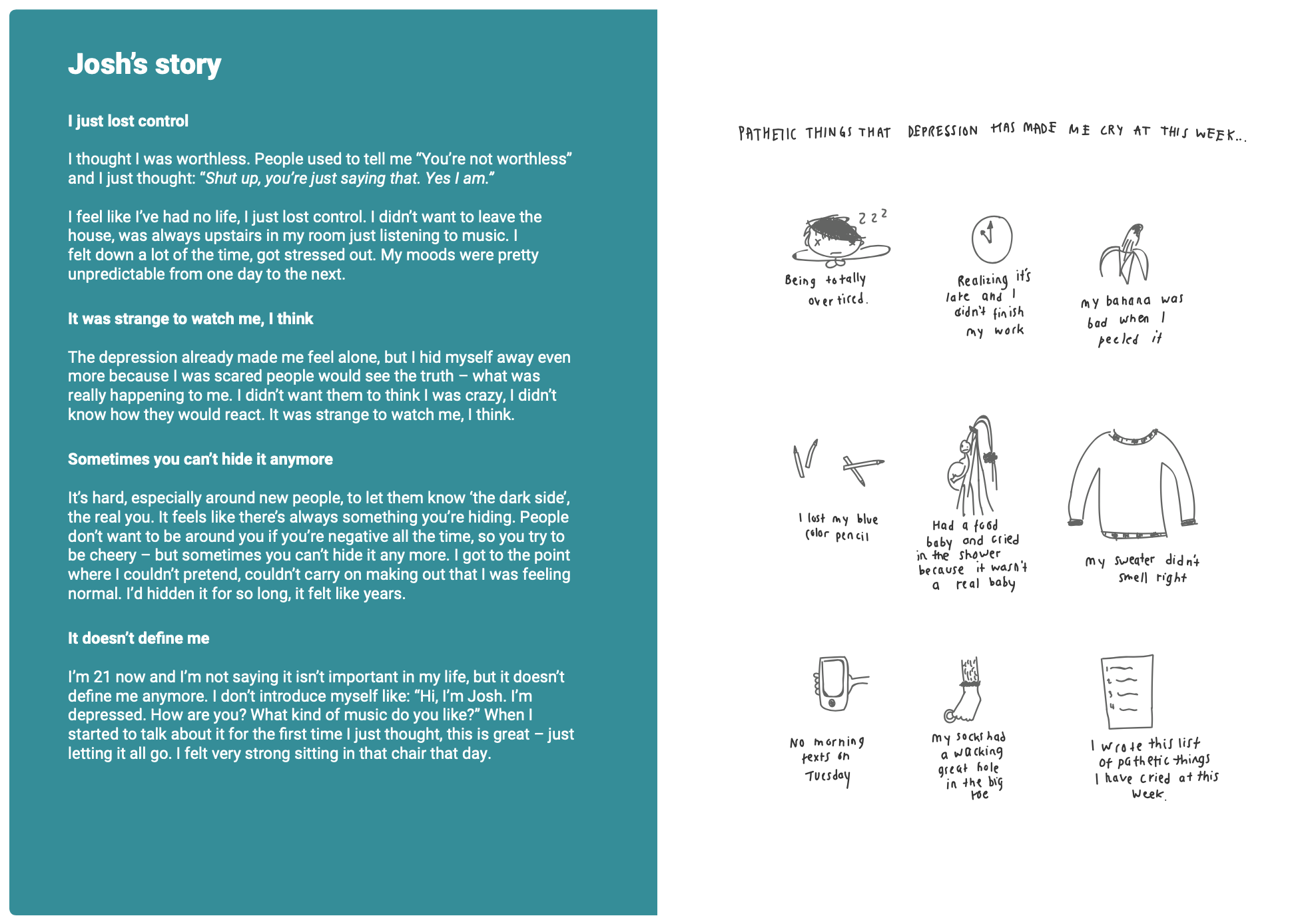KITES is a clinical study clinicians and patients with pediatric depression
I designed the various print materials required for the study
Role
Graphic Designer
Deliverables
Print Design, Illustration
Context
Part of the design team at the agency. My role and responsibilities included product design branding, web, print and marketing. Worked closely with stakeholder groups and clients
Results
- Successful initial launch of the clinical study
- Qualitative feedback from clinicians and patients
- Study eventually expanded into multiple regions






🤔 Problem
How might we help children and doctors better discuss and open up on pediatric depression?
👨👩👧👦 Users and target audience
There were two audiences, one for each of the produced materials. The intended user and target audience for the activity book was 7-11-year-old children enrolled on a clinical research study looking at pediatric depression. The audience for the shared stories were 12-17-year-olds affected by depression. These were not part of the study design and therefore were only used to help the young people open up and talk about what they were going through with their clinician.


👨🏾💻 Role
My role was to work with the relevant stakeholders to produce the required print materials. Stakeholders included copyrighters and project managers.


🧠 Process
Once the concept and initial content outline had been agreed, research began. This included research into the topic of pediatric depression itself, to understand our audience. Useful during this was working with an individual who shared the experience of going through depression as a teen, and was even willing to share diary illustrations as reference for our materials. We also had to do research for the activity book, knowing the kind of activities suited for 7-11-year-olds. After the research phase was done, production began, using Adobe CC apps to produce the print materials. Numerous rounds of amends took place to reach the final result, agreed with all stakeholders and the client.


📈 Outcome
The first outcome was a children's activity book for 7-11, produced in both English. The story was about a young girl having a dark cloud hanging over them, and talking about this with those around help relieve it somewhat. The intention being that the story and along with fun little activities would help children open up on what they were going through with those around them. The second outcome was a book for 12-17 year olds filled with real life stories of people who had gone through what they had, complete with illustrations.
The success of the first run of materials and positive qualitative feedback from clinicians and patients led to the materials being expanded into more languages and used in more countries, including Spanish. Finally, these materials were leveraged for further print materials such as posters and leaflets.
